La Rambla, or “the river”, have been replaced nowadays by the flow of massive amounts of people. If you look closely, these “actors” who are passive producers of waste, use La Rambla as a temporary stage, where they celebrate the city while leaving behind their plastic bottles.
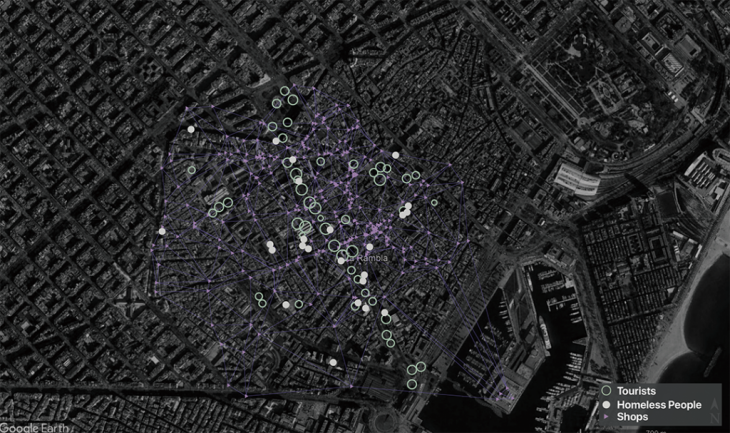
The research started by mapping our individual experience of a characteristic of the Ramblas and its surroundings; sound levels, people on the street, and a peculiar garbage system. Sound level averages well above the EU limits of 55 dB, hinted towards the well documented Barcelona tourist problem. Over 40 people counted in a two hour stretch on a cold November night. The municipal garbage system receives help from unofficial collaborators in collecting valuable material. These are products of a system manifested at its grandest in the compact strip of the Ramblas, and spreading out into the Raval and Gotico neighborhoods.
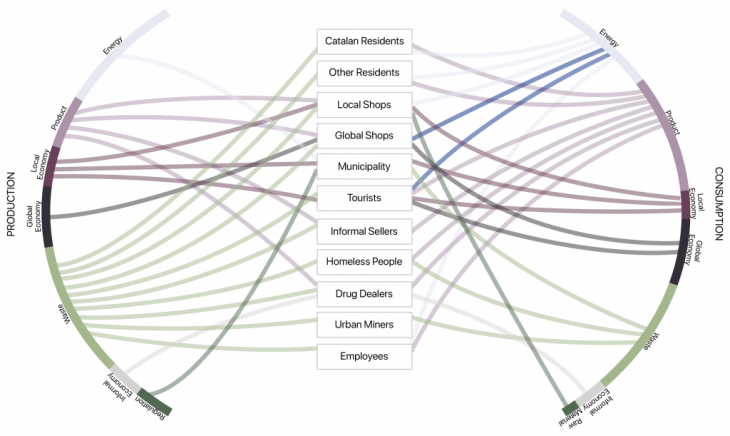
In order to understand Las Ramblas complexity, it was necessary to pause and observe the different actors playing a role in this magnificent play of time and space. Hence, we carefully noted all the key stakeholders on site and studied their consumption and production patterns. From frequent site visits and interviews with different groups, we were also able to determine the things they know and what they desire which enabled us to focus our research further on 3 key actors. Those are the tourist, the local artisans and the homeless people with the interesting common factor as waste.
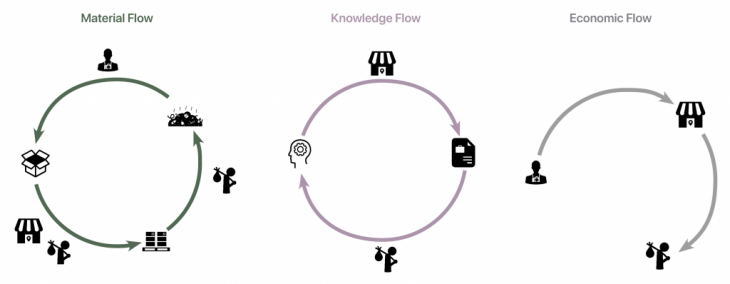
Plastic bottles are detriments to our well being, a massive embodied energy, a short life span in the hands of the user, but half a millennium to decompose in landfills. Not only is it a danger to the fauna and flora, but also to humans, its release of microplastics in the ocean can make its way in seafood and cause hormonal deficiencies in humans.
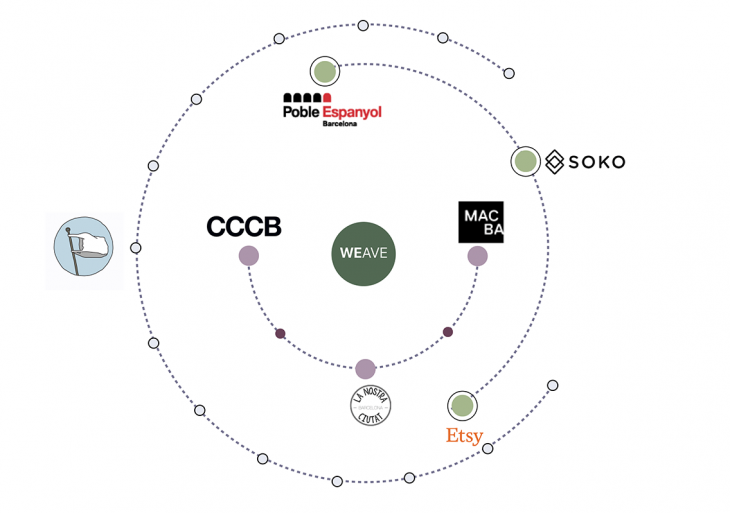
Our vision is to see this simple intervention expanding into other shops that promote local craftsmanship and designs as direct influencers and investors in the initial stages.
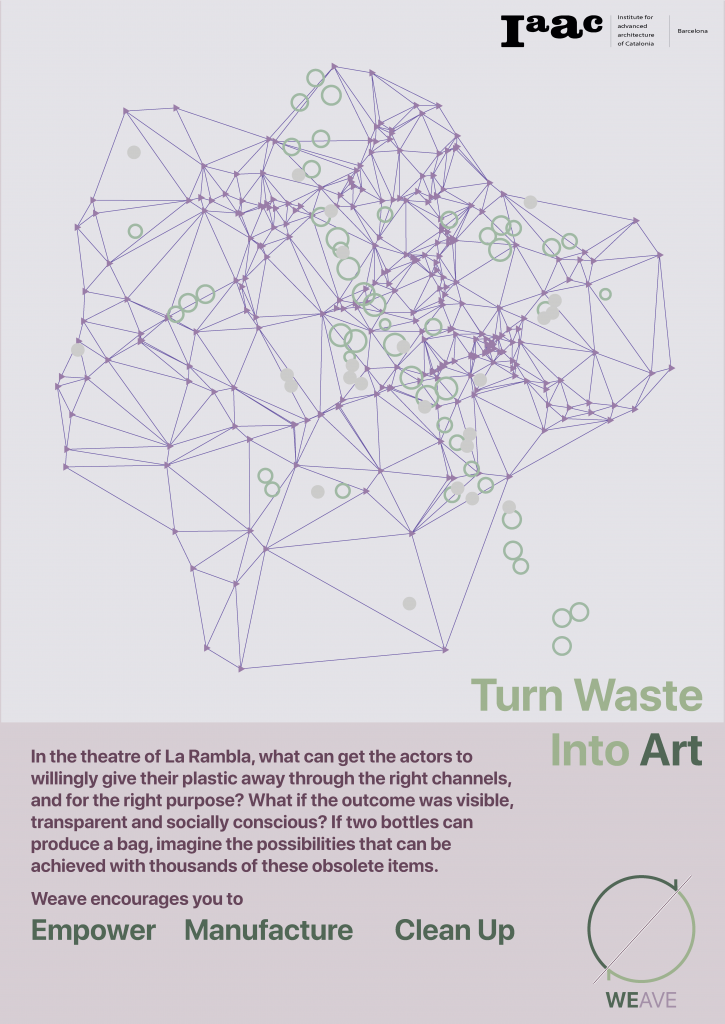
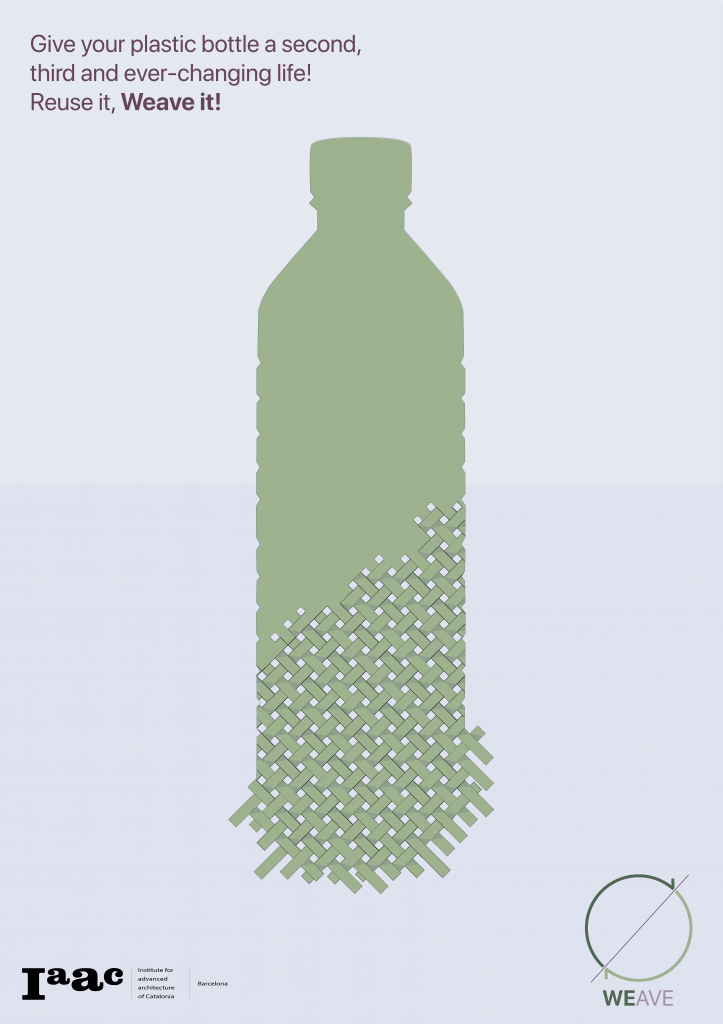
WEAVE is a project of IaaC, Institute for Advanced Architecture of Catalonia
MaCT (2017|2018) by:
Students: Camille Feghali | Najla Aldah | Ren Jiale
Faculty: Tomas Diez, Mathilde Marengo, Chiara Dallolio